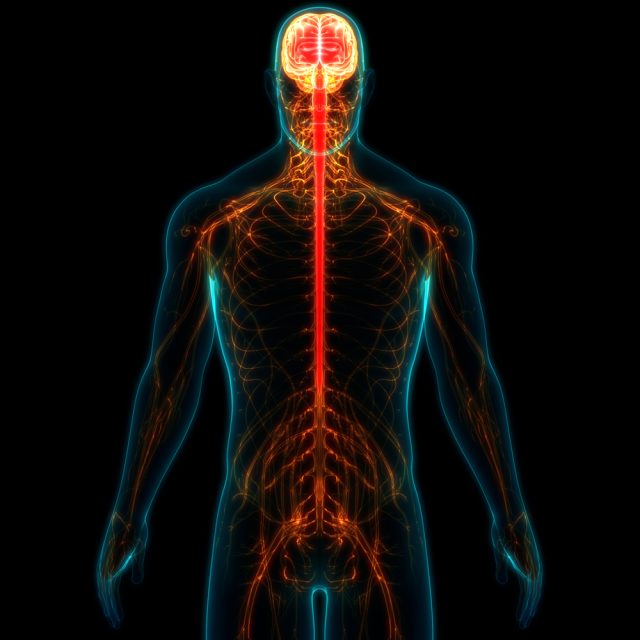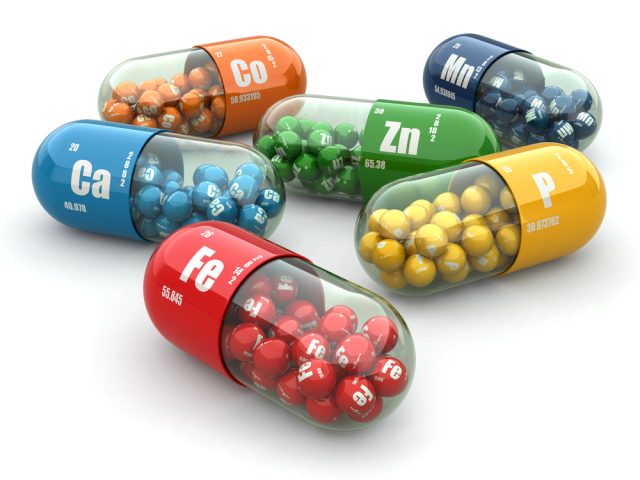By: Dominick L. Flarey, Ph.D., RN-BC, ANP-BC
Certified Bioenergetics Coach
President & Chief Consultant
BioEnergy Health Consultants, LLC
Explore the essentials of bioenergetics and nutrition, covering energy systems, macronutrients, metabolic pathways, and dietary strategies.
The interplay between bioenergetics and nutrition forms a fundamental aspect of understanding how organisms convert food into usable energy. This article delves into the core principles of bioenergetics, the roles of various nutrients in energy production, and the impact of dietary choices on metabolic pathways. It aims to provide a comprehensive overview of how nutrients influence the body’s energy dynamics, offering insights into optimal dietary strategies for health and energy management.
Key Takeaways
- Explore the basic
 concepts and principles of bioenergetics and its significance in biological systems.
concepts and principles of bioenergetics and its significance in biological systems. - Understand the roles of macronutrients and micronutrients in energy metabolism and overall health.
- Examine the major metabolic pathways involved in energy production, including glycolysis and oxidative phosphorylation.
- Discuss the influence of dietary patterns, meal timing, and hydration on energy levels and metabolic health.
- Highlight the future trends in nutritional bioenergetics, focusing on personalized nutrition and the role of technology in dietetics.
Fundamentals of Bioenergetics
The Concept of Energy in Biological Systems
Bioenergetics is a crucial field that explores how organisms manage their energy resources to sustain life. The concept of energy in biological systems is fundamental to understanding how living organisms perform various metabolic activities. Energy in the form of ATP is essential for maintaining the body’s physiological and biochemical functions.
Thermodynamics in Living Organisms
Thermodynamics in living organisms involves the study of energy transformations that occur in biological processes. The laws of thermodynamics govern these transformations, ensuring that energy is conserved and that it flows from higher to lower energy states within the body field energy.
ATP: The Energy Currency of the Cell
ATP (Adenosine Triphosphate) is often referred to as the energy currency of the cell. It provides the necessary power for most of the energy-consuming activities within the cell. The synthesis and utilization of ATP are vital for maintaining the body energy levels and supporting various cellular functions.
Macronutrients and Their Roles
Carbohydrates: Structure and Function
Carbohydrates are essential macronutrients that serve as the primary source of energy for the body. They are composed of carbon, hydrogen, and oxygen, and are categorized into simple sugars, starches, and fibers. Carbohydrates are crucial for brain function, and their adequate intake is vital for overall health.
Proteins: Building Blocks of the Body
Proteins are fundamental components of all living cells and are necessary for the structure, function, and regulation of the body’s tissues and organs. They consist of amino acids, the building blocks that are essential for muscle repair and growth. Proteins also play a critical role in immune responses, cellular communication, and metabolic processes.
Lipids: More Than Just Fats
Lipids, commonly known as fats, are another group of essential macronutrients. They provide energy, aid in the absorption of fat-soluble vitamins, and are crucial for the development and function of cellular membranes. Lipids are not only sources of energy but also serve as important signaling molecules and structural components of cells.
Micronutrients: Vitamins and Minerals
Essential Vitamins and Their Biological Importance
 Vitamins are organic compounds that are crucial for sustaining life. They play a key role in metabolic processes, immune function, and cell protection. Deficiencies in vitamins can lead to severe health issues, including impaired immune response, skin disorders, and neurological damage.
Vitamins are organic compounds that are crucial for sustaining life. They play a key role in metabolic processes, immune function, and cell protection. Deficiencies in vitamins can lead to severe health issues, including impaired immune response, skin disorders, and neurological damage.
Major and Trace Minerals in Human Nutrition
Minerals are inorganic elements that the body needs to function properly. They are categorized into major minerals and trace minerals based on the quantity required by the body. Calcium, magnesium, and potassium are some of the major minerals, while iron, zinc, and selenium are classified as trace minerals. These elements are vital for bone health, nerve function, and overall cellular metabolism.
Interactions Between Micronutrients
The interactions between different vitamins and minerals can enhance or inhibit absorption. For example, vitamin C enhances iron absorption from plant sources, which is crucial for preventing iron-deficiency anemia. Conversely, excessive calcium can interfere with the absorption of other minerals like zinc and magnesium.
Note: It is essential to maintain a balanced intake of micronutrients to avoid nutrition deficiencies and ensure optimal health.
Metabolic Pathways
Glycolysis and Gluconeogenesis
Glycolysis is the process by which glucose is broken down to pyruvate, releasing energy and producing ATP. This pathway is crucial for providing quick energy to cells under aerobic and anaerobic conditions. Conversely, gluconeogenesis is the synthesis of glucose from non-carbohydrate sources, vital during fasting states to maintain blood glucose levels.
- Key enzymes involved in Glycolysis: Hexokinase, Phosphofructokinase, Pyruvate kinase
- Key enzymes in Gluconeogenesis: Pyruvate carboxylase, Phosphoenolpyruvate carboxykinase, Glucose-6-phosphatase
The Citric Acid Cycle
The Citric Acid Cycle, also known as the Krebs cycle, is a series of chemical reactions used by all aerobic organisms to generate energy through the oxidation of acetate derived from carbohydrates, fats, and proteins into carbon dioxide. In addition to ATP, this cycle produces precursors for many compounds and plays a significant role in cellular respiration.
This cycle is central to cellular energy production and significantly impacts mitochondrial function.
Oxidative Phosphorylation
Oxidative phosphorylation is the metabolic pathway in which cells use enzymes to oxidize nutrients, thereby releasing energy which is used to reform ATP. This process occurs in the mitochondria and is the major source of ATP in aerobic organisms. It involves the transfer of electrons from electron donors to electron acceptors such as oxygen, via a series of electron carriers.
- Steps in Oxidative Phosphorylation:
- Electron transport chain initiation
- Proton gradient formation
- ATP synthesis by ATP synthase
Nutritional Biochemistry of Energy Production
Role of Enzymes in Metabolism
Enzymes are crucial for catalyzing all metabolic processes, from digestion to cellular respiration. They lower the activation energy required for reactions, thus enhancing the efficiency and speed of metabolic pathways. Key enzymes such as amylase, protease, and lipase play pivotal roles in the breakdown of macronutrients.
Hormonal Regulation of Energy Metabolism
Hormones like insulin and glucagon directly influence how the body utilizes energy. Insulin promotes glucose uptake and storage, while glucagon stimulates glucose production. This hormonal interplay ensures that cells receive a steady energy supply, crucial for maintaining metabolic homeostasis.
Dietary Influences on Metabolic Pathways
Diet composition can profoundly affect metabolic pathways. For instance, a high intake of simple carbohydrates can lead to an over-reliance on glycolysis, potentially causing insulin resistance. Conversely, a balanced diet supports diverse and efficient metabolic pathways, optimizing energy production.
Balanced nutrition is essential for optimizing the body’s metabolic processes and energy production.
Dietary Strategies for Optimal Energy
Balancing Macronutrients for Energy
 Achieving optimal energy levels involves a strategic balance of macronutrients—carbohydrates, proteins, and fats. Carbohydrates should primarily come from low glycemic index sources, such as whole grains and high-fiber vegetables, to maintain stable blood sugar levels. Proteins are essential for repair and growth, while fats should include a mix of saturated and unsaturated types, focusing on healthy oils like olive oil.
Achieving optimal energy levels involves a strategic balance of macronutrients—carbohydrates, proteins, and fats. Carbohydrates should primarily come from low glycemic index sources, such as whole grains and high-fiber vegetables, to maintain stable blood sugar levels. Proteins are essential for repair and growth, while fats should include a mix of saturated and unsaturated types, focusing on healthy oils like olive oil.
Impact of Meal Timing on Energy Levels
The timing of meals can significantly influence daily energy levels. Eating smaller, more frequent meals can help maintain a consistent energy supply, especially when combined with balanced macronutrient intake. Avoiding large meals that can lead to energy dips is crucial for sustained energy throughout the day.
Role of Hydration in Energy Metabolism
Hydration plays a pivotal role in energy metabolism. Adequate fluid intake ensures that nutrients are efficiently transported throughout the body, supports enzymatic functions, and aids in waste removal. It is recommended to drink at least eight 8-ounce glasses of water daily to support optimal metabolic functions.
Nutritional Assessment and Bioenergetic Health
Methods of Nutritional Assessment
Nutritional assessment is a critical component in understanding an individual’s health status and dietary needs. It involves a comprehensive evaluation of dietary intake, body composition, and biochemical tests. Nutrition-related decisions are crucial aspects of our daily routines, impacting bodily functions, energy levels, and overall health. Common methods include dietary surveys, anthropometric measurements, and laboratory assessments.
Bioenergetic Analysis in Clinical Settings
Bioenergetic analysis, often integrated with nutrition supplementation, assesses the body’s energy fields to diagnose and manage health conditions. Techniques such as the body field energy scan are employed to identify imbalances that may not be evident through conventional diagnostics. This approach is gaining traction in personalized health strategies.
Nutritional Deficiencies and Their Effects on Energy
Nutritional deficiencies can significantly impair bioenergetics nutrition, leading to reduced energy production and overall vitality. Nutrition support is essential in addressing these deficiencies, which often involve key vitamins and minerals. Effective management includes dietary adjustments and targeted supplementation strategies.
The Impact of Lifestyle on Bioenergetics
Physical Activity and Energy Metabolism
Physical activity is a crucial determinant of energy metabolism, influencing how effectively the body converts nutrients into usable energy. Regular exercise enhances mitochondrial density, which plays a pivotal role in energy production and overall metabolic health. The intensity and duration of physical activity directly correlate with improvements in metabolic rate and energy efficiency.
Sleep and Its Role in Bioenergetics
Adequate sleep is essential for optimal bioenergetic health. It allows for the necessary physiological repairs that maintain metabolic pathways involved in energy production. Disruptions in sleep patterns can lead to significant impairments in glucose metabolism and reduced energy levels, highlighting the importance of consistent sleep schedules.
Stress and Energy Management
Managing stress is vital for maintaining balanced bioenergetics. Chronic stress can deplete energy reserves and disrupt hormonal balances, which are critical for energy metabolism. Techniques such as mindfulness, regular physical activity, and adequate sleep are effective in mitigating the adverse effects of stress on energy management. Implementing these strategies can help unlock optimal health through improved bioenergetic function.
Therapeutic Diets and Bioenergetics
Exploring the intersection of diet and bioenergetics therapy, this section delves into how specific dietary practices can influence the body’s energy systems. Bioenergetics explores energy flow in living organisms, emphasizing ATP’s role in metabolism and vitality.
Ketogenic Diet and Its Effects on Metabolism
The ketogenic diet, a high-fat, low-carbohydrate regimen, has been studied for its potential in bioenergy healing. By altering macronutrient intake, this diet induces a state of ketosis, where the body utilizes fat as its primary energy source, potentially enhancing metabolic efficiency and energy healing.
Plant-based Diets and Energy Efficiency
Adopting a plant-based diet can significantly impact energy metabolism due to its high content of micronutrients and antioxidants. These components are crucial for optimizing mitochondrial function and overall energy production within cells.
The Role of Intermittent Fasting in Energy Regulation
 Intermittent fasting involves alternating cycles of eating and fasting, which can influence hormonal balance and improve metabolic health. This practice has been linked to improved energy levels and may serve as an effective component of nutrition therapy.
Intermittent fasting involves alternating cycles of eating and fasting, which can influence hormonal balance and improve metabolic health. This practice has been linked to improved energy levels and may serve as an effective component of nutrition therapy.
Each therapeutic diet offers unique benefits and challenges, making it essential to tailor dietary strategies to individual bioenergetic needs.
Future Trends in Nutritional Bioenergetics
Advancements in Nutrigenomics
Nutrigenomics is poised to revolutionize the way we understand and manage nutrition by tailoring dietary recommendations to individual genetic profiles. This approach promises to enhance the precision of nutritional interventions, potentially mitigating the risk of chronic diseases and optimizing overall health. The integration of genetic data with nutritional information is expected to drive significant advancements in this field.
Personalized Nutrition Plans
The development of personalized nutrition plans is a direct consequence of advancements in technology and our understanding of human biology. These plans are designed to cater to the unique dietary needs of individuals, based on their metabolic profiles and genetic predispositions. This trend is gaining momentum, as it aligns with the broader movement towards personalized medicine.
The Role of Artificial Intelligence in Dietetics
Artificial intelligence (AI) is increasingly being applied in the field of dietetics to analyze complex dietary data and predict individual responses to different dietary patterns. AI tools are being developed to provide more accurate dietary recommendations and to streamline the management of dietary interventions. This technology holds the potential to significantly improve the accuracy of dietary advice and the management of nutrition-related health conditions.
Dive into the future of health with our latest article on ‘Future Trends in Nutritional Bioenergetics’ at BioEnergy Health Consultants, LLC. Discover cutting-edge insights and how they can transform your approach to health and wellness. Don’t miss out on this opportunity to enhance your knowledge and optimize your health. Visit our website to read more and explore our extensive resources!
Conclusion
In conclusion, the intricate relationship between bioenergetics and nutrition underscores the foundational role that dietary choices play in energy production and overall health. By understanding the biochemical pathways through which nutrients are converted into energy, individuals can make informed decisions that enhance their metabolic efficiency and well-being. Future research in this field promises to unveil even more sophisticated strategies for optimizing human bioenergetic systems, potentially revolutionizing our approach to health and disease management. Thus, embracing a holistic view of nutrition and its impact on bioenergetics is essential for advancing our knowledge and improving our quality of life.
Frequently Asked Questions
What is bioenergetics and why is it important in nutrition?
Bioenergetics is the study of the transformation of energy in living organisms. It is crucial in nutrition as it helps understand how food fuels bodily processes and supports metabolic activities.
How do macronutrients contribute to energy production?
Macronutrients, including carbohydrates, proteins, and fats, are essential for energy production. Carbohydrates are the primary energy source, while proteins and fats serve as secondary sources and are vital for various bodily functions.
What role do micronutrients play in energy metabolism?
Micronutrients, such as vitamins and minerals, are critical for the proper functioning of metabolic pathways that produce energy. They act as cofactors and coenzymes in enzymatic reactions that drive energy production.
Can you explain the significance of ATP in cellular activities?
ATP (Adenosine Triphosphate) is often referred to as the energy currency of the cell. It provides the necessary energy for various cellular activities, including muscle contraction, nerve impulse propagation, and chemical synthesis.
What are some dietary strategies to optimize energy levels?
Balancing macronutrients, timing meals appropriately, and staying hydrated are key dietary strategies to maintain optimal energy levels throughout the day.
How does physical activity influence bioenergetics?
Physical activity enhances energy metabolism by increasing the efficiency of metabolic pathways and promoting the utilization of stored energy sources, thus supporting overall bioenergetic health.
What is nutritional assessment and how is it related to bioenergetics?
Nutritional assessment involves evaluating dietary intake and nutritional status to ensure adequate energy and nutrient supply. It is related to bioenergetics as it helps identify any deficiencies that may impact energy production and metabolism.
What are the future trends in nutritional bioenergetics?
Future trends include advancements in nutrigenomics, personalized nutrition plans based on individual genetic profiles, and the integration of AI to optimize dietary recommendations for energy management.

